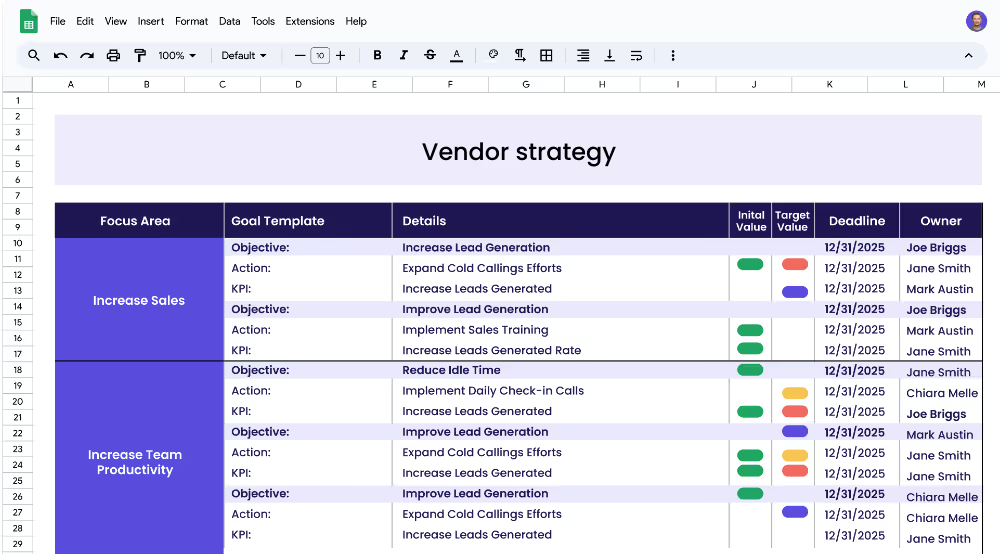A vendor strategy is a plan or approach that a company or organization uses to manage its relationships with vendors or suppliers. The strategy is designed to ensure that the company obtains the products, services, and support it needs from its vendors to meet its business objectives, while also minimizing risks and costs.
Each focus area has its own objectives, projects, and KPIs to ensure that the strategy is comprehensive and effective.
The Vendor strategy template is designed for teams of all sizes and industries who want to create a strategy to effectively manage their vendors. It can help teams streamline the process of onboarding vendors, build trust, monitor performance, and manage expenses.
When using the vendor strategy template, the first step is to define clear focus areas. Focus areas are broad topics that outline the overall objectives of the vendor strategy. Examples of focus areas could include establishing vendor relationships, monitoring vendor performance, and managing vendor expenses.
The next step is to think about the objectives that could fall under each focus area. Objectives are specific goals that need to be accomplished in order to achieve the desired outcome of the vendor strategy. For example, an objective under the focus area of establishing vendor relationships could be to develop mutually beneficial relationships.
Once objectives have been identified, it is important to set measurable targets (KPIs) to track progress and assess performance. KPIs are measurable targets that allow teams to track their progress and measure the success of their strategy. For example, under the objective of developing mutually beneficial relationships, a KPI could be to decrease onboarding time from 5 days to 2 days.
After setting measurable targets, it is important to implement related projects to achieve the KPIs. Projects (or actions) are specific initiatives that need to be completed in order to achieve the desired outcomes of the vendor strategy. For example, to decrease onboarding time from 5 days to 2 days, a project could be to execute the vendor onboarding process.
If you’re ready to accelerate your strategy and see faster results, consider using Cascade Strategy Execution Software. Unlike spreadsheets, Cascade provides an integrated platform designed to help you create, track, and execute your strategy with ease. Sign-up for free or book a demo with one of our strategy experts to start optimizing your vendor relations today!


